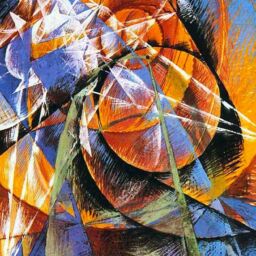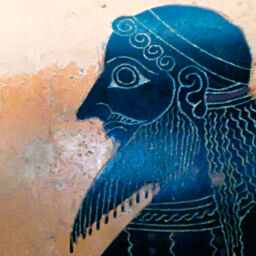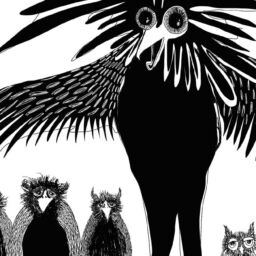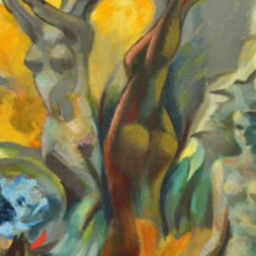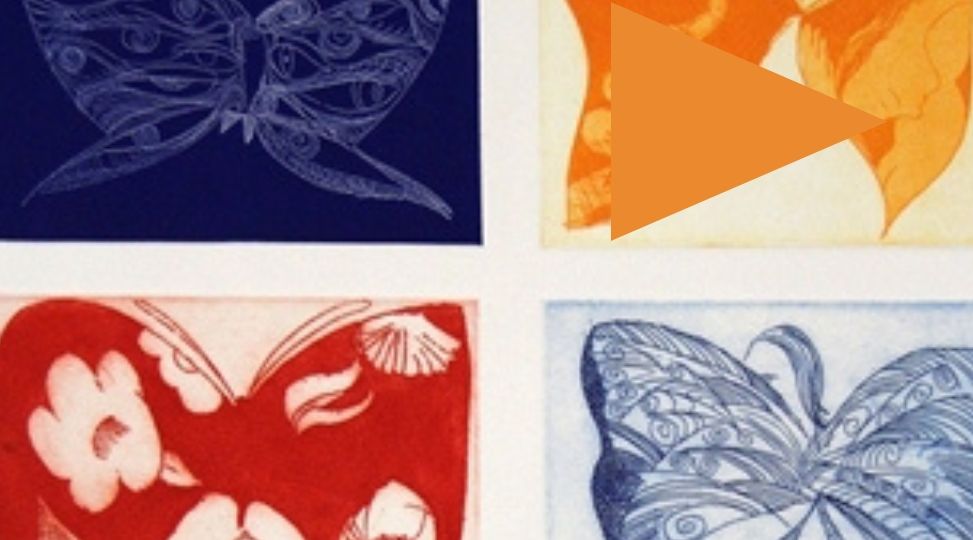
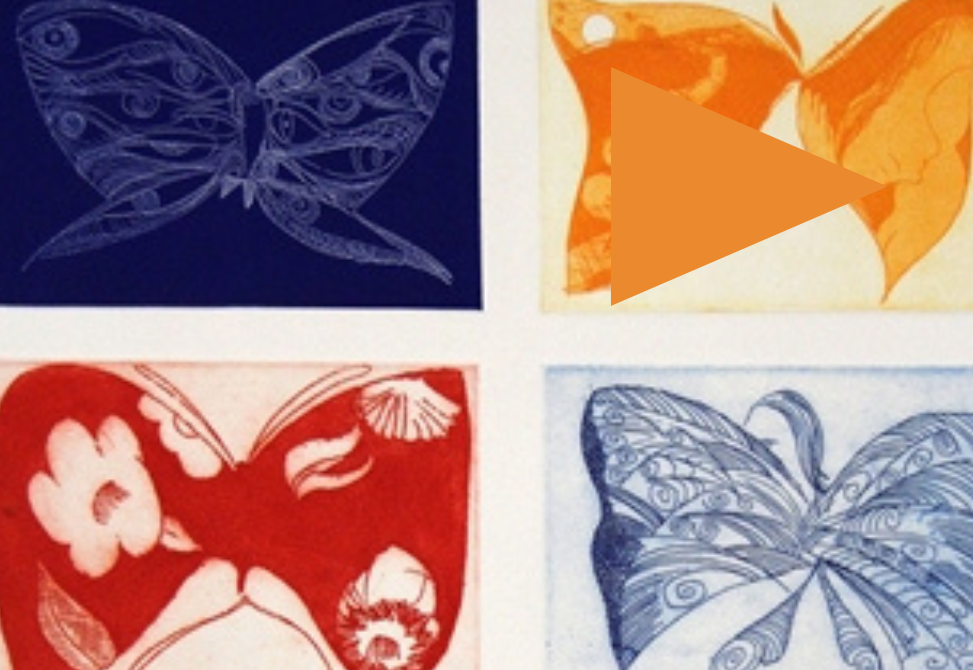 How could the exterior expression of a gender, different from that given at birth, come to me so late in life—at age 63? This was a conundrum and potentially one with great consequences. I had lived my entire life as an alpha male. I was married with children, a physician with patients, prestige, and money, and I was potentially relinquishing all of it in order to be myself. In retrospect, I see that the arc of my life created a way for Psyche to birth the complex bridging movement of introverted and extraverted sensation (Si, Se). However, at that point when I realized I could not continue with the façade of my old life, both functions were mired deep in shadow, and I spent the next seven years in this crucible. “Becoming a woman” was an overarching imperative that seemed non-negotiable.
How could the exterior expression of a gender, different from that given at birth, come to me so late in life—at age 63? This was a conundrum and potentially one with great consequences. I had lived my entire life as an alpha male. I was married with children, a physician with patients, prestige, and money, and I was potentially relinquishing all of it in order to be myself. In retrospect, I see that the arc of my life created a way for Psyche to birth the complex bridging movement of introverted and extraverted sensation (Si, Se). However, at that point when I realized I could not continue with the façade of my old life, both functions were mired deep in shadow, and I spent the next seven years in this crucible. “Becoming a woman” was an overarching imperative that seemed non-negotiable.
Shapeshifter
Initially, I kept busy. I helped a friend begin a new film studio and tried to stay away from home as my relationship with my wife became more and more strained. I remember driving to work each day, changing into my feminine clothes and putting on make-up, then changing back after the day was done. My behavior showed ongoing involvement of the trickster, the ambivalent inertia of extraverted thinking trying to find a persona that resonated with a deeper calling. I was a shapeshifter: now you see me, now you don’t. Most of all, I felt numb, alone, and afraid of where my life was heading. Of course, I saw those fears mirrored back from my wife—as if we both knew that a death of some kind was at hand but could not articulate the specifics. The team that we had been for many years used a combination of my introverted intuition (Ni) and her extraverted intuition (Ne), my introverted thinking (Ti) and her extraverted thinking (Te), but there was no way to bridge the deep abyss. My dreams were dark and chaotic, yet I had no fluency in any language that could help interpret any of this bizarre dance.
Then, in March of 2017, I volunteered to shepherd a suicidal friend through a thirty-day retreat in Mexico. After a rigorous prep, I took ibogaine and ayahuasca. The last night of my sacred plant journey, I had a clear vision of being wedded to a “being of light” and was impregnated when the marriage was consummated. This journey into another realm seemed full of intrapsychic messages from the Self. This psychic movement seemed to support Beebe’s (2004/2017) idea:
The tension we feel when two complexes are expressing opposite valuations is quite often resolved not by a decision between the two, or even by transcendent synthesis that expresses the best of both, but by moving to a new pair of opposite positions. (p. 211)
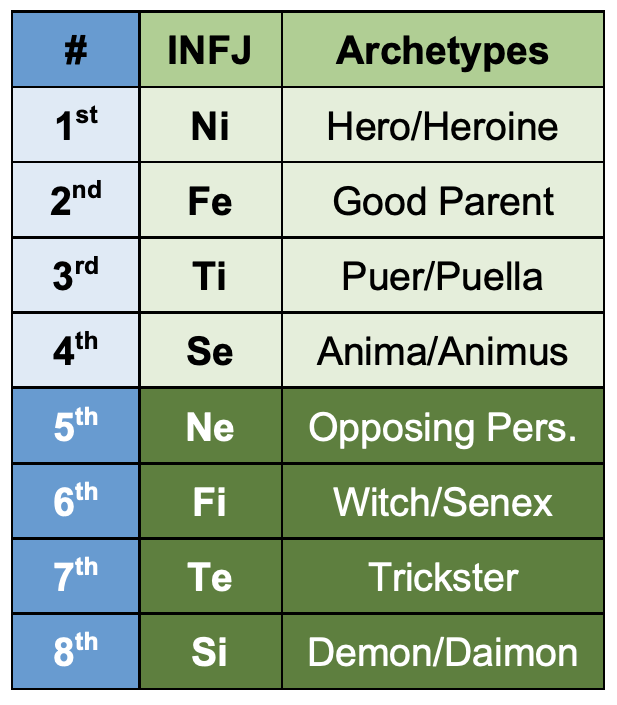 In my case, the greatest pressure was being exerted between the fifth function and the first, Ne and Ni. The extraverted intuitive opposing personality wanted some form of expression and was relentless, but the heroic introverted intuition was still locked into the Ni/Fe/Ti paradigm that had served as my guiding force for years. What became obvious was that the weak and infantile inferior function was being brought into awareness, but it needed some balance or counterweight. In this setting, the activated introverted sensation could and would counterbalance the evolving extraverted sensation that was seeking form.
In my case, the greatest pressure was being exerted between the fifth function and the first, Ne and Ni. The extraverted intuitive opposing personality wanted some form of expression and was relentless, but the heroic introverted intuition was still locked into the Ni/Fe/Ti paradigm that had served as my guiding force for years. What became obvious was that the weak and infantile inferior function was being brought into awareness, but it needed some balance or counterweight. In this setting, the activated introverted sensation could and would counterbalance the evolving extraverted sensation that was seeking form.
I began to read Jung more closely and relied greatly on the readings to build a foundation, entwining them with long-used recovery rituals. In August of 2017, while my wife was in Nevis, I moved out of our home. I knew that I was dying and that if I stayed in those circumstances, I would not survive. When she returned, she was understandably angry; she felt betrayed, and especially heartbroken that the person who had carried her animus energetic for nearly forty years was becoming something “other.” She holds an ENFP typology, and this activation of her opposing personality, introverted intuition, was atomic. She intuited some psychological disease as the only possible underlying cause of the changes in me. I went through neuro-psychometric testing to disprove that, and, as I had expected, no pathology was found. I remember her screaming at my psychiatrist in anguished tones, “You are wrong! There’s something horribly wrong with my husband!” I was in purgatory: on the one hand, I felt a compulsion to become a woman, and on the other hand, I experienced great guilt and sadness about leaving my best friend and mate. It was an irreconcilable opposition.
I felt that I had no choice but to continue in this unusual transition. I made plans to have facial feminization surgery, an irreversible step on this path. It took my trickster extraverted thinking function to alter set and setting in a previously unimagined way; to locate the best surgeon I could find; to sell resources to pay for the procedure; and to think my way through how I would get to Boston, recover, and get back home. In September 2018, I underwent ten hours of surgery in Boston. My features were dramatically changed with shaving of bone; placement of implants; raising and filling of the lip, eyes, and cheeks with fat; and a complete retraction of my scalp. After the procedure, I awoke in the darkness of my room, completely disoriented from the prolonged anesthesia. I had been in the underworld for nearly thirteen hours. I then heard a voice: “Sheila, you have done well. There is work to do.” Psyche seemed to be driving the narrative, and the deep body work seemed to satisfy conscious and unconscious issues in some unimagined way. Introverted sensation and extraverted sensation were now joined in a balancing pattern, yin and yang. With the help of a loving brother and cousin, I spent two weeks in recuperation, then navigated my way back to Texas.
The rest of 2018 included breast augmentation and a dawning yearning to matriculate at Pacifica Graduate Institute. My introverted thinking seemed intent on establishing a new pattern of working with thoughts, intuition, and metaphor instead of rigidly relying on science and data. This development has not been uncomplicated. The introverted intuitive and extraverted feeling (Fe) functions, which were chronically entangled in an unhealthy people-pleasing mode, needed readjustment. I had to learn to establish boundaries between the two as they had been in an incestuous dance for years. In many ways, they were as primitive in their expression as my inferior function.
Rebirth
By the summer of 2019, I had had vocal feminization surgery. My vocal cords were shortened in a procedure that gave me a higher register and prevented me from raising the volume of my voice. I entered the Depth Psychology program in Jungian and Archetypal Studies at Pacifica Graduate Institute. In my first year, during a lunch break on campus, I looked into a mirror and was amazed to recognize the face from my Las Vegas vision (Newsom, 2022). I knew her in a deep and profound way (Figure 1). At Pacifica, I began to develop a way of communicating with my new voice. Even if it was raspy, I loved the sound. What came out felt authentic, more from my heart than my head. I was also able to identify feelings and expressions in the outer world and to not immediately contort a response based on introverted intuition and narrow assessment. The women in my cohort and instructors at Pacifica became the midwives I needed to help me birth a new way of living into my own truth. This was the beginning of a new relationship with anima.
But it was not until I took a class in typology that I began to see in these events the maturation of extraverted sensation manifesting in a stuttering, often-awkward journey into living life as a female. Developing extraverted sensation seemed a necessary predicate to a strengthening of the superior-inferior axis. Stepping back from the fray of the day to day, I discovered this: making manifest that ephemeral female image with shape, color, and form was nothing less than a personification of an aspect of anima and the function it carried, extraverted sensation.
The autumn of 2019 through the summer of 2021 was a profoundly mystical period for me. I began to allow my long-suppressed introverted intuition, no longer subjugated to auxiliary extraverted feeling, to express itself. I loved each course at Pacifica. The reading, contemplative exercises, deep communication, and loving bonds established with others in process fed my soul. Jung and Hillman’s magnificent works were only two of the arenas that I was given to explore. I felt that I was on the right path and that I would obtain a PhD, then teach others about transgender transition from a depth perspective. A dream I had in early January 2020 was reflective of my sense of direction:
Dream #5: “Black Madonna,” Austin, Texas, 2020
I am in a white bus driving with a group of people going from Tahoka to Lubbock, Texas. We are on a tour, and it feels like something from the movie Jesus Christ Superstar where at the start the cast pulls up in a bus. We arrive at the Buddy Holly Memorial and walk inside. There is a grotto with a black Madonna that is the centerpiece of the room. There is a plaque located on the floor just in front of the black figure. It is a strip of iron with a black heart welded to it. The grotto has stone stairwells leading down to the left and to the right. I go down the right stairwell to the lower level and there a trickster figure, dressed as a court jester, waits for me.
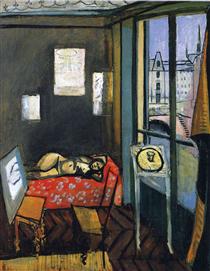 The iconic imagery seems to emphasize the importance of what Psyche is revealing. The central motif of pilgrimage that Self had used to frame the 2015 dream “The Sacrifice” in Santa Fe (Newsom, 2022) is recaptured here. The opus points back to an underlying complex: sacrifice. Erel Shalit (2002) said, “The complex is the structure, the carriage, wherein archetypal and instinctual patterns take shape and can make the journey to the surface to manifest in the human sphere” (p. 29). The black heart and the white bus seem to embody specific patterns emphasizing an ebb and flow, or shifting back and forth from conscious to unconscious, light and shadow, as a way to work with the complexes seeking to take form. Shalit said, “An adequately ego-integrated complex brings new energy” (p. 31). In retrospect, my burgeoning anima awareness had made access to the lower functions more imaginable. For instance, in the past I had projected the archetypal figure of the witch on multiple women in positions of power. This projection was really my own introverted feeling (Fi) function lurking subliminally in the darkness of the sixth position and erupting periodically over seemingly minor issues. Now, I was that witch, both black and white.
The iconic imagery seems to emphasize the importance of what Psyche is revealing. The central motif of pilgrimage that Self had used to frame the 2015 dream “The Sacrifice” in Santa Fe (Newsom, 2022) is recaptured here. The opus points back to an underlying complex: sacrifice. Erel Shalit (2002) said, “The complex is the structure, the carriage, wherein archetypal and instinctual patterns take shape and can make the journey to the surface to manifest in the human sphere” (p. 29). The black heart and the white bus seem to embody specific patterns emphasizing an ebb and flow, or shifting back and forth from conscious to unconscious, light and shadow, as a way to work with the complexes seeking to take form. Shalit said, “An adequately ego-integrated complex brings new energy” (p. 31). In retrospect, my burgeoning anima awareness had made access to the lower functions more imaginable. For instance, in the past I had projected the archetypal figure of the witch on multiple women in positions of power. This projection was really my own introverted feeling (Fi) function lurking subliminally in the darkness of the sixth position and erupting periodically over seemingly minor issues. Now, I was that witch, both black and white.
The dream served to make conscious my aspirations toward the sacred feminine, the black Madonna who has witnessed the excruciating physical death of her martyred son. The Mother archetype issues from the second position in Beebe’s model, in my case, extraverted feeling. Her feelings of grief are archetypal yet intensely personal. The stairs down into the depths can be seen as reflective of a bridging of my extraverted and introverted feeling. The gentle benevolence of the Madonna also suggests the necessity of feeling in the maturation drama that is at the core of sacrifice. Jung (1916/1956) said, “The world comes into being when a man discovers it [a psychological cosmogony]. But he only discovers it when he sacrifices his containment in the primal mother, the original state of unconsciousness” (¶ 652). This letting go of the primal comfort of being anchored in the womb of the ubiquitous maternal is personal, painful, and a feeling complex that contains a chthonic intensity.
Jung cautioned, however, that the libido of the images that come from the depths must be approached with care. He said, “The re-integration of a personal complex has the effect of release and often of healing, whereas the invasion of a complex from the collective unconscious is a very disagreeable and even dangerous phenomenon” (Jung, 1948/1969, ¶ 591). Perhaps that is why the trickster is needed, suggested in my dream by the image of the court-jester. In a single image, one sees the agency that can carry the archetypal capacity to connect and to bridge all functions. Acting as a mirroring agent, the trickster is always reflecting the relationship between conscious and unconscious. Just as the ego seeks to transcend its boundaries to transform in relation to the unconscious, the mercurial agency “impregnates, begets, bears, devours, and slays [itself]” only to resurrect anew (Jung, 1948/1967, ¶ 272). This process is part of an arduous journey outlined by Beebe and described by Shumate (2021):
We must develop the dominant (1st) and auxiliary (2nd) functions, and be able to use the tertiary function (3rd) yet leave it behind; only then can we access the trickster function (7th) in our shadow and begin to make it conscious, and this must occur before we can hope to integrate aspects of the anima function (4th). (p. 105)
Dragged by the Trickster
Entering the spring of 2021, I was determined to do whatever I could to complete the PhD that I had begun in 2019. However, I began to worry about the financial burden. My wife and I were now supporting separate households. Even though we continued to talk and to be involved in each other’s lives, our finances were strained. I borrowed a sum of money from another family member and felt certain that it would be sufficient to complete my studies. However, an investment that I had counted on had not matured, and I saw that I would run out of money by October if I did nothing; further schooling was prohibited. The following dream came at that point when I realized the necessity of returning to work:
Dream #6: “Kingfish,” Austin, Texas, 2021
I am talking at the airport (perhaps in Dallas) with a Black retired coach (whom I later name “Kingfish”). He wears a bowler derby hat, chomps on a cigar, and it is easy to communicate with him. He travels to all the Dallas Mavericks games and carries a large briefcase which bears a logo which is that of the Chicago Bulls. He explains he got this luggage with air travel credits and takes it everywhere. As we are talking, a group of soldiers dressed in black, full military gear and appearing ready for combat marches by. I ask Kingfish where he thinks they are going, and someone else behind him says,“El Paso.” I then realize that I have some sort of credential around my neck, like those I would wear at a medical conference, and suddenly I am being dragged along by the soldiers as my credentials have gotten entangled in their gear. I am being pulled up an escalator and scream: “I don’t have the credentials for this sort of thing.” Kingfish says, “It looks like you do,” and smiles. With the credentials tied around my neck, I am being strangled. I realize there is no way to stop the process, but I must do something; I must flip over, or I will die. In the last scene, I am looking at Kingfish, and he is waving at me and smiling. I realize that he has a fortune in his briefcase.
Kingfish is certainly the trickster, now in a more mature (retired) form and carrying a concealed fortune with him. My trickster function is extraverted thinking and the central dynamic is the Ti/Te dyad. The credentials strangling my neck in the dream speak to my medical background, where introverted thinking predominated. My introverted thinking had become even more inflated over the previous two years with constant attention to my work at Pacifica. Now, a signal by the daimon of money and resources suggested that extraverted thinking was necessary for me to survive. Introverted thinking had to be quieted to allow extraverted thinking to flourish. The eternal child carrying the Ti function had to be sacrificed. “El Paso” means “the bridge” in Spanish. Somehow, another level of awareness and maturity had to be reached if I was to survive. This consciousness-raising was in process as illustrated by the escalator motif.
In the archetypal realm of the trickster, my ego consciousness felt alone, abandoned, and confused. (Maryann Barone-Chapman (2017) said, “As a messenger of the underworld, Trickster’s methods include sacrificing naiveté, ego, and victimhood. S/he is uniquely placed to hold the negative and positive until the meaning and purpose of each woman’s creation myth becomes installed as a psychic reality” (p. 202). Like Hermes bringing Persephone up from the underworld, Kingfish’s army of soldiers dragged me up to a new level of reality, possessing a consciousness that I had not had before. This pivot reflects an important lesson: a perpetual dance of libido must be maintained if the unconscious is to come into the realm of ego. The egosyntonic and egodystonic functions are facets of the same process. Beebe (1997) said about this movement, “The unconscious will respond of its own to the attitude with which it is met, giving you the chance to revise your attitude if it is too extreme” (p. 4).
 As I pondered the loss of my relationship with Pacifica and with my cohort, suicidal thoughts began to resurface yet again. My psychiatrist/therapist suggested a trial of the psychedelic agent ketamine. I had little to lose, so I consented, and my life was, once again, forever changed. I described the visions I experienced in a journal entry that reads as follows:
As I pondered the loss of my relationship with Pacifica and with my cohort, suicidal thoughts began to resurface yet again. My psychiatrist/therapist suggested a trial of the psychedelic agent ketamine. I had little to lose, so I consented, and my life was, once again, forever changed. I described the visions I experienced in a journal entry that reads as follows:
Journal entry #1: March 9, 2021
The psychic experience was profound. There was such depth and complexity. There were worlds there—an infinity of such breath and expanse as to be unbelievable, no, unfathomable. The common theme was connectivity; everything was an aspect of everything else. The multiplicity of forms, depth of flow, and the breadth of expression were profound. Early on I heard a voice say, “You simply have to let go of who you think you are.” That movement somehow permitted me to flow into dimensions of a multiplicity of color and form. Somewhere, the thought of “love” appeared. With that simple thought, I became “present.” There were altars of light that I could conflate with the simple force generated by the idea of love. Love defined me in this galaxy of infinities; it was the only thing that provided a sense of presence, of position. It somehow made me a reality in confluences in which I was only a potential aspect. I saw a magnificent goddess that peeped through the background, like a beautiful and gigantic face peeking through immense cumulus clouds. This “seeing through” experience gave me an understanding: behind each thing there is a deeply feminine movement. This/It articulates all things. A sacred feminine essence boundaries totality with an infinite consciousness. I heard two refrains: “love bears all things” and “love is.” So, it seemed that when I came back to this reality, which seems now very, very compact, I knew that there were infinite complexities that I could not accommodate in any form or fashion.
This was my first direct encounter with ketamine, a dissociative anesthetic. At intramuscular doses lower than that for general anesthesia, a psychedelic experience can be reliably constellated which augurs healing in some unknown fashion. It was staggering how alien all of this seemed from the perspective of my very limited egoic consciousness. It was “other” in a profound way. Typology has been the tool most helpful in framing the process. My opposing personality function, extraverted intuition, was dilated, and my superior function, introverted intuition, narrowed as I intuited a multiplicity of paths that could extend on infinitely from the imagery I had encountered. The passage honored global intuition.
How so? In this radical experience, I had glimpsed something beyond a limited paradigm—beyond ego and a sense of self—and typology offers a means of expression that has been difficult to find in the blossoming field of psychedelic assisted therapy. Shumate (2021) accurately said, “If we can manage to become conscious of the [eighth] function and its archetypal energy, we can access those aspects that are oppositional to the dominant without losing access to our dominant function” (p. 151). My experience with ketamine amplified images that were orderly and seemed to represent a conjoining of the visionary aspect of my dominant introverted intuition and the embodied aspect of my daimonic introverted sensation.  The images were archetypal remnants and symbolic figures that constellated in some interpersonal way. In this mysterious manner, they contained all the oppositions that my life journey had created. I was reminded of some of my dreams that, in a single image, captured all facets of conscious and unconscious contents and their paradox.
The images were archetypal remnants and symbolic figures that constellated in some interpersonal way. In this mysterious manner, they contained all the oppositions that my life journey had created. I was reminded of some of my dreams that, in a single image, captured all facets of conscious and unconscious contents and their paradox.
Marisa Swank (2021), who has written about a Jungian approach to psychedelic therapy, said: “The psychedelic experience may be thought of as an alchemical endeavor …. It may mediate the appearance of profound unconscious material from which an individual can begin the work of seeking the lapis that is found in the muck” (p. 36). The psychedelic realm is a liminal realm, one that is Dionysian in character. Dionysus was known as “the loosener,” a figure suggestive of mind-loosening potential. My own experience was holographic as it held sensation, feeling, thinking, and intuition in a single fugue. Movement back into a conscious realm has necessitated deconstruction of this imagery to release the libido that has appeared from the depths of the unconscious. How to work with this energetic has been informed mostly by global intuition.
Along with the mental health perspective of ketamine and the prospect of a novel psychology inclusive of a variety of new therapies, this intuitive awakening was an important step along my path. Hillman (2016) said emphatically, “there is profound importance of Dionysus for the feminine psyche” (p. 24). This connection of Dionysus with the feminine leads back to the realm of anima and accentuates how important working with psychedelic drugs may be for my own growth and, perhaps, for others who have awakened to their own complex path of individuation.
In September 2021, I completed the requirements at Pacifica for my master’s degree. By this point, I had been in full gender transition for three years and was feminine enough to “pass” as a woman in the world. My family and I had worked very hard to repair frayed communication. My awakening extraverted thinking enabled me to replace old ways with new ones and to solicit others to join me. I could now laugh with my wife; I could go out socially with her and my daughters; we could work together to figure out finances; and we could decipher ways to help each other in times of tribulation. My trickster was helping me create a path forward that was a necessary predicate to heal myself and the family unit.
I also began to synthesize my depth training, medical background, and the profound experience that had exploded with my exposure to ketamine. Using introverted intuition and introverted thinking, I formulated a novel approach in which I would offer the psychedelic in a concierge service. I planned to screen applicants, then to travel to their homes for administration of the medication. The process would be centered around the importance of consciousness and the constellation of a healing matrix between myself and the patient. This approach invoked the concepts of transference and countertransference and their roles in creating a restorative psychic container. Metis, the Greek goddess of wisdom, seemed to best embody the archetypal awareness that would inform healing through the mysterious, yet undeniable, psychedelic experience. Once again, a guiding dream occurred that reminded me of the past I had overcome while pointing toward a busy future:
Dream #7: “The Crawl Space,” Austin, Texas, Autumn 2021
I am in a safe, small space below a house. The space is where I live. Next, I am outside of the space and see that a window is broken. I think that is how I got out. There is blood on the window and a lamb is lying just beside it. I know it has been sacrificed. Next, a good woman friend who is a therapist and I are working together offering therapy of some type to soldiers. I am trying to dial in a low number on some sort of counting device, but it keeps running into higher numbers. There are so many people to see.
 This is a short yet consequential dream. It reveals the state of captivity I had occupied for so long. The “small space” has multiple meanings. It could suggest introverted sensation hidden in the depths in the eighth position, so very stunted in its expressivity. Introverted sensation is the function that monitors the body’s interiority, and I spent a lifetime monitoring the bodies of others. I remember that when I would ask many patients how they were doing, they would simply say, “I don’t know. You tell me, Doc.” This sort of agreement in which I would be a monitor for others in exchange for money and prestige was a perfect example of living a very narrow life. I could tell others, but I could not let myself know how I was doing. It is so sad to see that psycho-spiritually, my Self was small enough to be hidden in a tiny box, like a child’s coffin, “under the house.” The conscious awareness that comes with the escape leaves a reminder for the future self now seeking form: it was the wounding of the physical body with the bloody facial feminization surgery that was the ticket of admission to a new way of life.
This is a short yet consequential dream. It reveals the state of captivity I had occupied for so long. The “small space” has multiple meanings. It could suggest introverted sensation hidden in the depths in the eighth position, so very stunted in its expressivity. Introverted sensation is the function that monitors the body’s interiority, and I spent a lifetime monitoring the bodies of others. I remember that when I would ask many patients how they were doing, they would simply say, “I don’t know. You tell me, Doc.” This sort of agreement in which I would be a monitor for others in exchange for money and prestige was a perfect example of living a very narrow life. I could tell others, but I could not let myself know how I was doing. It is so sad to see that psycho-spiritually, my Self was small enough to be hidden in a tiny box, like a child’s coffin, “under the house.” The conscious awareness that comes with the escape leaves a reminder for the future self now seeking form: it was the wounding of the physical body with the bloody facial feminization surgery that was the ticket of admission to a new way of life.
In this new realm, an anima consciousness, extraverted sensation as mediatrix, has constellated and is maturing and guiding the soul-driven imperative to help others who are equally wounded by living such small lives. Introverted and extraverted sensation operate in a dyadic flicker, constantly monitoring what is going on: first within, and then without (Shumate, 2021, p. 169). The movement has symmetry that now seems coherent and purposeful. It brings full circle the imperative of the 2015 dream in which the Christ figure sings in operatic tones: “A sacrifice must be made.” I had to give up doing for others what I could not do for myself.
The Dance of Sheila
I felt a deep resonance in Carol Shumate’s class on “Psychological Types” at Pacifica. Beebe’s eight-function model—and the personality development that it points toward—has a coherence that made sense of my journey and my dreams. In the reasonable, logical, temporal, and coherent tone of my final paper, I recognize the voice of that introverted thinker, my dear puer, who sought for years to guide me onward to some hazy goal that never materialized and would not have fulfilled me anyway. The straight and narrow path seemed for so long to be my calling, and it was until it wasn’t, and therein lies an epiphany.
I now better understand the odds against all of this: a male Caucasian physician living in the firm grasp of an ESTJ cultural weltanschauung awakens to the soul’s desperate pleading late in life. That the soul seeks to live forward something alien, foreign, and predictably destructive is now so comprehensible. Nothing heroic is here, merely a journey of survival. Suicide has always been an option, yet it is not now in my narrative. My path took many twists and turns, but like Hillman (2014) intoned:
I am already revealed …. Revelation already given with existence—not a task. Every move we make, phrase we utter, is confession of our heart because it reveals our images. Heart is manifest in the fantasies displayed in my life, not concealed in my depths. (p. 27)
Just recently, I had to take a precious family member to a facility for life-saving medical treatment, and later I was embarrassed that I had to ask another family member for financial help. The ketamine business is in its infancy. Many days I awaken in tears, and thoughts lead to wondering what might have been if I had ignored the voice that called to me on the porch in Nevis that fateful April morning in 2013. But another saving dream recently appeared:

Dream #8: “The Cave,” Austin, Texas, January 2022
I am in a cave within a pool of deep, warm water. I am masculine, although I do not see my face. I am having a light conversation with an attractive woman who stands on the edge of the pool. We are laughing and making jokes about something, and it is obvious that we know and love each other by the tone of the friendly banter. There are two long, entwined coils that lie on the side of the pool. They appear to look like strands of DNA and are dull black and metallic. I know, somehow, that we are to put them around our waists and their weight will take us down to the ancestors. The scene shifts and the woman is next to me in the pool. She hands me an iPhone and says in a laughing tone, “Why don’t you call me and tell me how much you love me?” We both laugh when she says that and nod knowingly at each other. As the dream ends, I know we are about to drop down and go to get the children.
The dream suggests that the anima and animus are operating in tandem through the dynamic field of the inferior function. Their easy fluency seems to convey an integration of sorts that may have come about from the alchemical dialectic that proceeded from a change in the container. The shift from male to female form, from an image streaming from the superior to that of the inferior function, may have simply been a movement necessary to shift a spatial-temporal paradigm beyond a concept of “I” in order for me to become aware of an organizing phenomenon other than that of the heroic ego.
This choreography by the archetypal anima (and animus) within the lower function shifts away from a perspective of personified complexes to that of independent personalities which cannot mature in the goal-oriented realm of hero-king; it must happen with a consciousness under the wing of the deep, sacred feminine. The iPhone suggests a hermeneutic libido at work here and invokes love as a predicate to this transformative process. Both agencies are about to drop down into the maternal realm of water from the air-filled domain of Mercurius to link with a childlike state that was lost early in the movement. Jung (1928/1966) said of this moment, “the immediate goal has been achieved, namely the conquest of the anima as an autonomous complex, and her transformation into a function of relationship between the conscious and the unconscious” (¶ 374).
The dream of the cave brings me full circle to the night that I had my waking dream “The Choir” at age 5 (Newsom, 2022). Hillman reminded us that such awakening is already built into the soul, yet I had to consciously begin the dialogue with anima many years later. And it was anima that marshaled the essentials to discern the future (Ni), to provide the vision to create a harmonious tribe (Fe), to help create a reliable model of reality (Ti), and ultimately to break these functions free from an unhealthy codependence.
The face of the woman that I saw sitting on the bed in that hotel room in Las Vegas in 2002 (Figure 1) is the same face that I see now in my mirror. Make-up, colorful dresses, and breast augmentation framed a mysterious awakening to the extraverted sensations of touch, taste, smell, and sound that I could never have imagined in my life as a male. Jung (1921/1971) said about the extraverted sensation function: “Objects are valued in so far as they excite sensations …. The sole criterion of their value is the intensity of the sensation produced by their objective qualities” (¶ 605). He said the extraverted sensate person enjoys “real life lived to the full. His whole aim is concrete enjoyment, and his morality is oriented accordingly” (¶ 606). 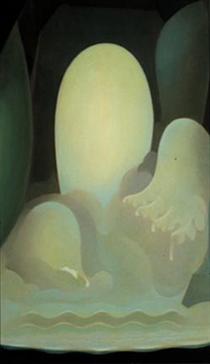 Yet that is not the complete explication of the image I see in the mirror. I have lived as a male and now as a female; both energetics resonate in my psyche. Hillman (2013) said, “Our … longing to be healed asks that the two ends be held together, that our other half so near to us, so like us as the shadow we cast; enter the circle of our light” (p. 57).
Yet that is not the complete explication of the image I see in the mirror. I have lived as a male and now as a female; both energetics resonate in my psyche. Hillman (2013) said, “Our … longing to be healed asks that the two ends be held together, that our other half so near to us, so like us as the shadow we cast; enter the circle of our light” (p. 57).
Now, that anima image can lead me into the unconscious realms and orchestrate the bridging dialogues that have been sleeping from the beginning. Only in this way can the feminine human being feel its own resonance. The mature anima whispers from the depths that it has found what was sought: “the children” are the images the soul has stowed in the unconscious functions that want to find the light and to bear witness to their own becoming. From the darkness appears a light as unanticipated as the odd journey that has unfolded. It is a consciousness that sees in the ebb and flow no singular purpose, no obtuse goal, no victory. It sees in all movement only a unity, always and only, “something in itself” (Rilke, 1954, p. 45).
References
Barone-Chapman, M. (2017). Trickster, trauma, and transformation. In E. Brodersen & M. Glock (Eds.), Jungian perspectives on rebirth and renewal (pp. 189-204). Routledge.
Beebe, J. (1992). Integrity in depth. Texas A&M University Press.
Beebe, J. (1997). Attitudes toward the unconscious. Journal of Analytical Psychology, 42:(1), 3-20. https://doi.org/10.1111/j.1465-5922.1997.00003.x
Beebe, J. (2004/2017). Understanding consciousness through the theory of psychological types. In J. Cambray, & L. Carter (Eds.), Analytical psychology: Contemporary perspectives in Jungian analysis (pp. 83-115). Brunner Routledge.
Hillman, J. (2014). The thought of the heart and the soul of the world. Spring Publications.
Hillman, J. (2016). Mythic figures. Spring Publications.
Jung, C. G. (1916/1956). The sacrifice (R. F. C. Reid, Trans.). In H. Read et al. (Eds.), The collected works of C.G. Jung: Symbols of transformation, (Vol. 5). Princeton University Press.
Jung, C. G. (1921/1971). General description of the types (R. F. C. Reid, Trans.). In H. Read et al. (Eds.), The collected works of C.G. Jung: Psychological types, (Vol. 6). Princeton University Press.
Jung, C. G. (1928/1966). The relations between the ego and the unconscious. (R. F. C. Reid, Trans.). In H. Read et al. (Eds.), The collected works of C.G. Jung: Two issues in analytical psychology, (Vol. 7). Princeton University Press.
Jung, C. G. (1948/1967). The dual nature of Mercurius. (R. F. C. Reid, Trans.). In H. Read et al. (Eds.), The collected works of C.G. Jung: Alchemical studies, (Vol. 13). Princeton University Press.
Newsom, S. (April 2022). Saving Sheila: Part One, The Descent. Personality Type in Depth.
Rilke, R. M. (1954). Letters to a young poet (Herter Norton, Trans.). W.W Norton & Co.
Shalit, E. (2002). The complex. Inner City Books.
Shumate, C. (2021). Projection and personality development via the eight-function model. Routledge.
Swank, M. (2021). Mercurius ubiquitous. International Journal of Jungian Studies, 13:(1), 13-40. https://doi.org/10.1163/19409060-bja10006
Images
Blackman, C. (n.d.). Girl on beach. Retrieved from wikiart.com
Blackman, C. (n.d.) Papillon. Retrieved from wikiart.com
Dine, J. (1969). Four hearts. Retrieved from wikiart.com
Fish, J. (1971). Peaches. Retrieved from wikiart.com
Matisse, H. (1916). Studio Quay of Saint Michel. Retrieved from wikiart.com
Pelton, A. L. (1931). Wells of jade. Retrieved from wikiart.com
Redon, O. (1893). Sita. Retrieved from wikiart.com






